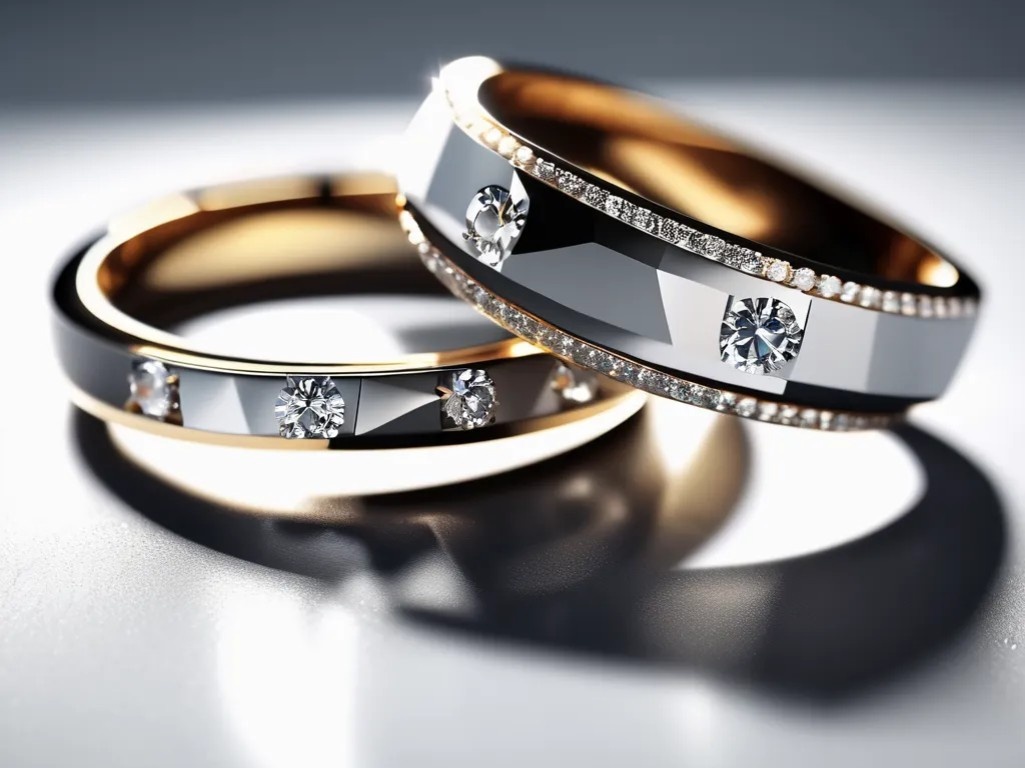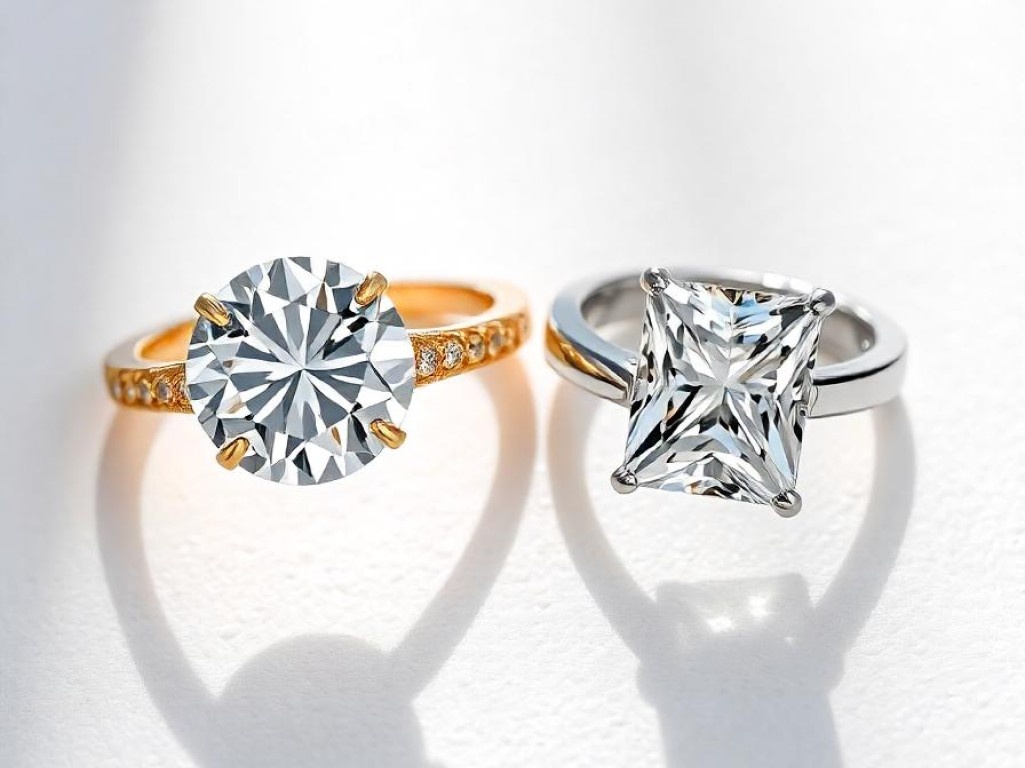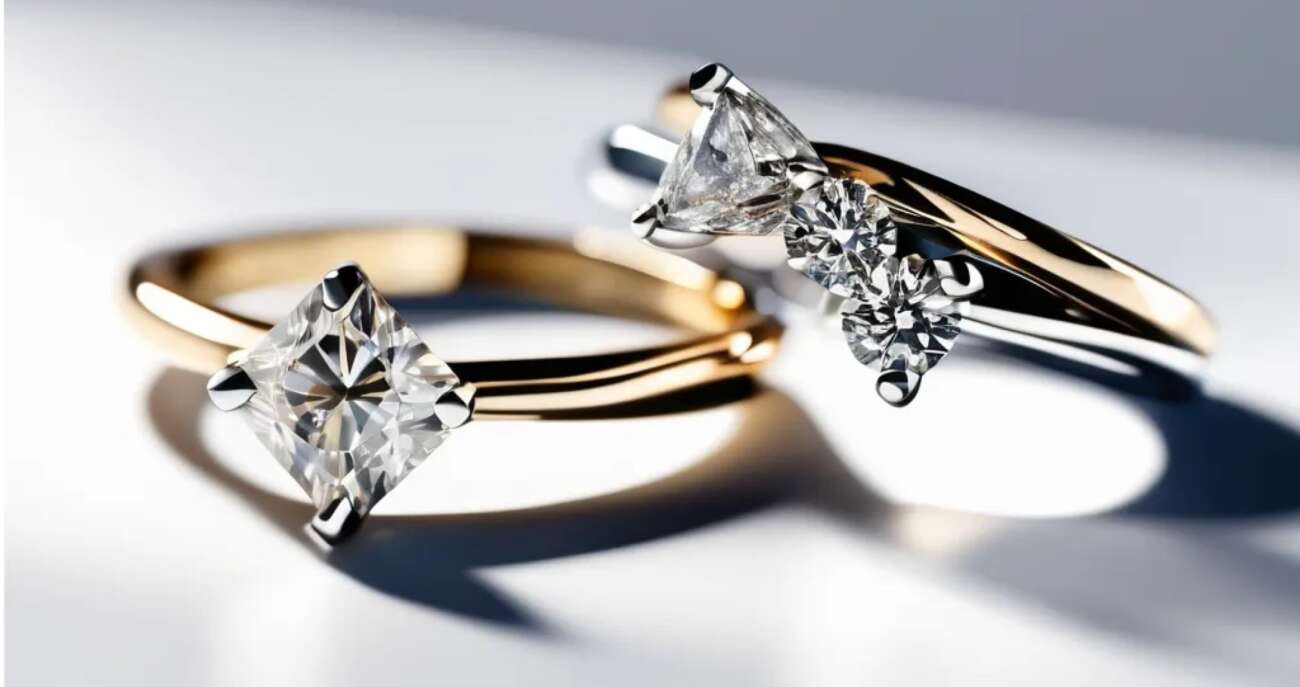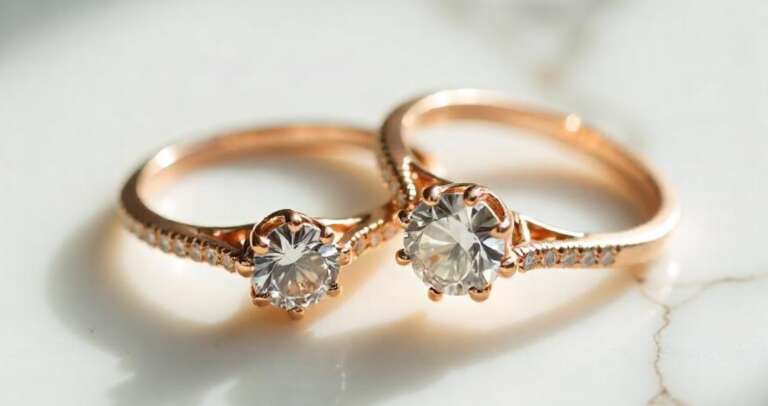As diamond engagement rings continue to symbolize eternal love worldwide, a new contender is disrupting the traditional diamond scene—lab-grown diamonds. Ethically sourced and widely affordable, it’s no surprise that these man-made stones are growing in popularity. If you’re curious about whether a CVD diamond is right for you, keep reading to learn everything you need to know to make an informed decision.
What Are CVD Diamonds?
CVD (Chemical Vapor Deposition) diamonds are a type of lab-grown diamond. Unlike natural diamonds and HPHT (High Pressure High Temperature) lab diamonds, CVD diamonds first appeared on the fine jewelry scene about a decade ago and have since gained popularity, especially in the online jewelry market.
Are CVD Diamonds Real Diamonds?
Yes, CVD diamonds are real diamonds. Although grown in a lab, CVD diamonds are gem-quality and share the same elemental structure and physical, chemical, and optical properties as natural diamonds. They are polished and cut in the same way as natural diamonds, making it impossible to tell the difference with the naked eye.
CVD diamonds undergo the same certification process as natural diamonds and are graded according to the 4Cs—color, cut, clarity, and carat. The Gemological Institute of America (GIA) has been grading laboratory-grown diamonds since 2007, and each stone comes with an official grading report to confirm its quality and value.
How Are CVD Diamonds Made?
The process of growing a CVD diamond involves introducing a gas, such as methane, into a vacuum chamber and activating and breaking down the molecules of the gas with microwaves. This causes the carbon atoms to accumulate on a substrate, similar to how snowflakes accumulate in a snowfall. Over time, CVD producers have experimented with different gases to optimize growth rates and stone quality.
Early CVD diamonds often had a brownish color, but producers have found that treating the material at high temperatures and pressures can remove this coloration, making the crystals colorless. This treatment has made it more challenging to identify these synthetic diamonds, but gemologists still have methods to distinguish them.

How Fast Do CVD Diamonds Grow?
Unlike natural diamonds, which take billions of years to form, lab-grown diamonds take around a month to grow. During the CVD process, carbon atoms attach to the diamond seed one layer at a time. The time to create different synthetic stones varies; for example, it takes 2+ weeks to grow a 1-carat clear diamond, while yellow and blue diamonds can grow in 5-10 days.
Are All Lab-Grown Diamonds CVD Diamonds?
No, not all lab-grown diamonds are CVD diamonds. Lab diamonds can also be created using the HPHT process, which mimics the high pressure and high temperature conditions of natural diamond formation in the Earth.
How Do CVD Diamonds Compare to Natural Diamonds?
Cost
- CVD Diamonds: Typically 30-50% less expensive than natural diamonds of comparable size and quality, allowing you to go bigger and better with your fine jewelry purchase.
- Natural Diamonds: Generally more expensive due to their rarity and the extensive process of mining and refining.
Ethical and Environmental Impact
- CVD Diamonds: Ethically sourced and conflict-free, with a smaller environmental footprint. No mining is involved, reducing the impact on local landscapes, habitats, and wildlife.
- Natural Diamonds: Mining can have significant environmental and societal impacts, including habitat disruption, water pollution, and human rights violations, although many companies are working to mitigate these effects.
Durability and Aesthetics
- CVD Diamonds: Just as durable and beautiful as natural diamonds, with the same optical properties.
- Natural Diamonds: Highly valued for their unique and timeless appeal, often seen as a symbol of luxury and tradition.
Market Perception
- CVD Diamonds: Growing in popularity, especially among younger consumers who value sustainability and innovation.
- Natural Diamonds: Still highly prized and sought after for their heritage and emotional significance.
Are Cubic Zirconias the Same as CVD or Natural Diamonds?
No, cubic zirconia is not the same as CVD or natural diamonds. Lab-created diamonds share the same chemical properties as natural diamonds, while cubic zirconia is a diamond simulant with a shorter lifespan due to damage from everyday wear and discoloration over time.
While cubic zirconia and other diamond simulants like moissanite can be more affordable, they are easily distinguishable from real diamonds. Moissanite, for instance, is known for its distinctive sparkle and is often used in engagement rings. However, it is not as hard or durable as a diamond.

Why Choose CVD Diamonds?
- Cost-Effective: CVD diamonds are typically 30-50% less expensive than mined diamonds of comparable size and quality, allowing you to go bigger and better with your fine jewelry purchase.
- Ethical and Conflict-Free: CVD diamonds are grown in a controlled environment, ensuring they are conflict-free. When you purchase a CVD diamond, you know exactly where the stone comes from, avoiding the ethical concerns associated with mined diamonds, such as child labor, human rights violations, and poor working conditions.
- Environmental Impact: Lab-grown diamonds have a smaller environmental footprint. Mining for natural diamonds is disruptive to local landscapes, habitats, and wildlife, while CVD diamonds create almost no waste and do not fund conflict.
What is the Resale Value of CVD Diamonds?
While traditional jewelers might claim that lab-grown diamonds have no resale value, this is not entirely true. Like mined diamonds, the resale value of CVD diamonds is determined by the 4Cs—carat, cut, clarity, and color. However, buying an engagement ring with the intention to sell it later is generally not a good investment strategy, as it is challenging to turn a profit unless the diamond is exceptionally rare.
Local jewelers may not always accept lab-grown diamonds for resale because they are a relatively new product. If you are looking to sell your CVD diamond jewelry, consider exploring online marketplaces for better options.
Making Your Decision
When deciding between a CVD diamond and a natural diamond, consider your personal values, budget, and the intended use of the diamond. Both options have their unique advantages, and the best choice depends on your individual preferences and priorities.
Whether you opt for a CVD diamond or a natural diamond, you can be confident that you are acquiring a beautiful and durable gemstone that will stand the test of time.





Leave a Comment